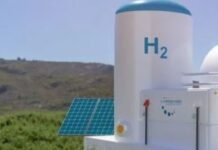Zambia is set to restarting works on the Zambia-Tanzania Interconnector project following a renewed support after several years of delay caused by the COVID-19 pandemic and Zambia’s financial challenges, including a debt default in 2020.
The cross-border electricity infrastructure project aims to strengthen energy links across East and Southern Africa. The Zambia-Tanzania Interconnector involves building a 620-kilometer, 400-kilovolt double circuit transmission line that will run from Iringa in Tanzania to the Zambian border, extending further to Sumbawanga. A key substation will be constructed at Tunduma, near the border, to facilitate the power exchange.
READ: Kenya, Israel seal 5-year deal on renewable energy
Zambia-Tanzania Interconnector
The total project cost stands at US $320M, with the remaining work requiring US $298M. A US $245M grant from the World Bank will cover most of this amount, while additional support comes from the European Union and the UK. Completion is scheduled for 2028.
This initiative aims to improve electricity access in southwestern Tanzania, phase out small-scale diesel generators near Sumbawanga, and enhance the stability of power supply in the region. It also creates a vital energy corridor connecting power markets from Ethiopia and Kenya through Tanzania and Zambia, potentially forming one of the largest integrated electricity markets globally.
According to World Bank Country Manager Achim Fock, the project supports the vision of a unified African energy market. By linking the Southern African Power Pool (SAPP) with the Eastern African Power Pool (EAPP), the interconnector is expected to reduce energy costs, increase reliability, and promote greater investment in the continent’s energy sector.





